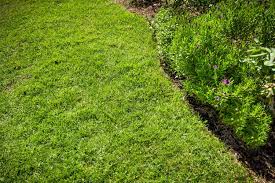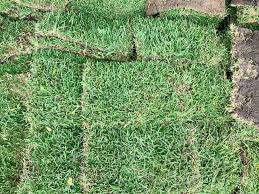St Augustine grass sod is a popular choice for many homeowners due to its lush, green appearance and resilience. It is a type of warm-season grass that thrives in the southern regions of the United States, where the climate is generally hot and humid.
One of the key advantages of St Augustine grass sod is its ability to establish quickly, creating a beautiful and dense lawn in a short period. This is especially beneficial for those looking to have a green lawn without waiting for grass seeds to germinate and grow.
Another great feature of St Augustine grass sod is its ability to tolerate shade better than other warm-season grasses. If you have parts of your yard that don’t receive full sun, this grass type can still flourish, making it a versatile choice for different landscape conditions.
St. Augustine grass sod is known for its excellent ability to spread and fill in gaps, creating a thick carpet-like lawn. This characteristic makes it effective at choking out weeds and minimizing the need for constant maintenance.
To keep your St. Augustine grass sod healthy and thriving, regular watering is essential, especially during hot and dry periods. Additionally, fertilizing every few months will help promote strong growth and vibrant color.
However, there are a few factors to consider before opting for St. Augustine grass sod. It is not as drought-tolerant as some other grass varieties, so if you live in an area with frequent water restrictions, you might need to be cautious.
In addition, St. Augustine grass sod is an excellent choice for those looking to establish a beautiful and resilient lawn quickly. Its ability to handle shade and its capacity to fill in gaps make it a top pick for many homeowners. Remember to provide proper care, including regular watering and fertilizing, to ensure your St. Augustine grass sod remains healthy and vibrant throughout the seasons.
Read Also: General Principles of Goat Production
Growing and Care Guide of St Augustine Grass Sod

Growing and caring for St. Augustine grass sod requires some attention and effort, but the results are well worth it. Follow this simple guide to ensure a healthy and vibrant lawn:
1. Choosing the Right Time: Plant St. Augustine grass sod during its active growing season, which is typically in late spring through summer. Avoid planting during winter when the grass is dormant.
2. Preparing the Soil: Before laying the sod, prepare the soil by removing any debris, rocks, and weeds. Loosen the soil to a depth of 4-6 inches to promote root penetration and proper drainage.
3. Laying the Sod: Lay the St. Augustine grass sod on the prepared soil, ensuring tight joints and no overlapping. Press the sod firmly onto the soil to establish good contact for root growth.
4. Watering: Immediately after laying the sod, water it thoroughly to help it establish roots. Keep the soil consistently moist for the first few weeks. As the sod takes root, gradually reduce the frequency of watering.
5. Mowing: Once the sod has established strong roots (usually after 2-3 weeks), you can begin mowing. Set your mower to a height of around 3-4 inches to maintain a healthy and dense lawn. Avoid cutting more than one-third of the grass height in a single mowing.
6. Fertilizing: St. Augustine grass requires regular feeding to thrive. Apply a balanced fertilizer with equal amounts of nitrogen, phosphorus, and potassium every 6-8 weeks during the growing season. Follow the manufacturer’s instructions for application rates.
7. Weed Control: Keep an eye out for weeds and promptly remove them to prevent competition for nutrients and water. You can use herbicides specifically designed for St. Augustine grass, but follow the instructions carefully to avoid damaging the lawn.
8. Managing Shade: St. Augustine grass can tolerate some shade, but it thrives best in full sun. If you have areas with limited sunlight, consider trimming back overhanging branches or choosing a more shade-tolerant ground cover.
9. Pest and Disease Control: Regularly inspect your lawn for signs of pests or diseases. Treat any issues promptly with appropriate insecticides or fungicides, if necessary.
10. Aeration and Dethatching: Every 1-2 years, consider aerating the soil to improve air circulation and water absorption. Additionally, dethatch the lawn if excessive thatch build-up occurs to prevent root suffocation.
11. Winter Care: In colder climates, St. Augustine grass may go dormant during winter. To protect it from frost damage, avoid walking on the lawn when it is frozen, and keep the lawn clear of debris.
By following these steps and providing proper care, your St. Augustine grass sod will flourish, creating a lush and vibrant lawn that you can enjoy for years to come. Remember that each lawn is unique, so adjusting your care routine based on your specific lawn’s needs is essential.
Where to Find St Augustine Grass for Sale

You can easily find St. Augustine grass for sale at local nurseries, garden centers, and landscaping suppliers in areas where it is suitable for growing. You can also check online retailers that specialize in selling grass sod or seeds. Remember to verify that St. Augustine grass is appropriate for your region’s climate before making a purchase.
Read Also: Feed Lot Fattening of Rams Practice
Where to Find St Augustine Grass for Sale near Me/You
To find or locate St. Augustine grass, you can try the following options:
1. Local Nurseries and Garden Centers: Visit nearby nurseries or garden centers in your area. They often carry a variety of grass types, including St. Augustine grass, especially if it is suitable for your region’s climate.
2. Landscaping Suppliers: Landscaping suppliers and sod farms may have St. Augustine grass available for purchase. Check their websites or contact them directly to inquire about availability.
3. Online Retailers: Many online retailers specialize in selling grass sod and seeds. Look for reputable sellers that offer St. Augustine grass and ship to your location.
4. Local Home Improvement Stores: Some larger home improvement stores may carry St. Augustine grass sod or seeds. Check with stores in your area to see if they have it in stock.
5. Local Farms or Turf Farms: If there are farms in your region that grow and sell turfgrass, they might have St. Augustine grass available. Reach out to them and inquire about their products.
6. Professional Landscapers: Contact local landscaping companies or professionals who may have access to St. Augustine grass sod and can help with installation.
Remember to verify that St. Augustine grass is suitable for your specific climate and growing conditions before purchasing. It’s essential to choose a grass type that will thrive in your area for a successful and healthy lawn.
Read Also: Exploring The Benefits of EPR Recycling
